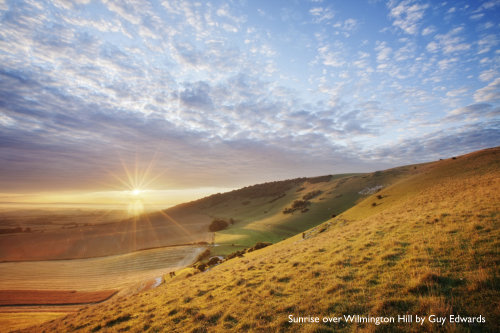The creation of a National Park in the South Downs was first mooted in the 1920s when public concern was mounting about the threats to the downland.
It would take decades before calls for a National Park along the ever-expanding south coast conurbation gathered pace and, following two major public inquiries, hundreds of meetings and passionate campaigning from local communities, the South Downs National Park finally came into being on 31 March, 2010.
 The dream of many became a working reality when 1,600 Km2 of England’s most-cherished lowland landscape was designated for the nation as a special place for natural beauty, wildlife and cultural heritage.
The dream of many became a working reality when 1,600 Km2 of England’s most-cherished lowland landscape was designated for the nation as a special place for natural beauty, wildlife and cultural heritage.
Fourteen years on it’s still as special.
As we mark the 14th birthday of your National Park, we look at some of the Park’s success stories.
Wildlife bouncing back
There’s been some incredible stories of birds, mammals, invertebrate and plant species bouncing back. It’s largely down to improvements in habitat, more nature-friendly farming, creation of new habitat, some re-introductions and a concerted effort between rangers, local communities and partners. Just some examples include otters returning and water voles thriving after reintroduction on the River Meon, farmer-led projects to support farmland birds such as the grey partridge, the return of short-eared owls to Seven Sisters Country Park, and pearl bordered fritillaries returning to downland hotspots. There’s still a long way to go to tackle biodiversity loss, but there are the green shoots of recovery in many places.
Access for all
Miles Without Stiles routes have been created for people with limited mobility and families with pushchairs, together with a fleet of mobility scooters at key sites. The Egrets Way in East Sussex and Centurion Way is West Sussex have helped to connect busy urban areas to the heart of the National Park. Well over 50km of new or resurfaced cycle and multi-user paths have been installed and the South Downs has over 3,300km of public rights of way – the largest network of public paths of any National Park.
Local Plan
The award-winning South Downs Local Plan, covering 2014 to 2033, replaced more than 1,000 overlapped policies that were in existence across the area of the National Park with 92 clear policies covering all aspects of planning. The Local Plan supports delivery of vital “ecosystem services”, which are the services provided by the environment, such as clean water and air, dark night skies and tranquillity. The affordable housing policy prioritises on-site provision of rented affordable homes.
 International Dark Sky Reserve
International Dark Sky Reserve
After a detailed application process and thousands of measurements, the National Park became an International Dark Sky Reserve in 2016 and is still one of only 22 in the entire world. It’s one of the most accessible places to go stargazing in the UK and tens of thousands of people have been inspired by our annual Dark Skies Festival.
Restoring lowland heaths
It’s a wildlife oasis rarer than the rainforest and home to some of Britain’s most endangered reptile, amphibian and bird species. Our Heathlands Reunited project has conserved and enhanced 23,825 hectares – or 18,000 football pitches – of lowland heath. An independent scientific assessment revealed the initiative was “significant” in restoring the ecological condition of the habitat.
A National Park for all
We’ve engaged with tens of thousands of people from all across the south east through our events and projects, including many people from diverse, under represented communities who may have discovered the joy of a National Park for the first time. Just one example of a legacy of this work is the “We Hear You Now” trail at Seven Sisters Country Park – an immersive audio experience produced by writers of global heritage. There are over 91,000 different volunteering days a year, supported by many different organisations, to conserve and enhance the National Park. Our social prescribing work has helped people dealing with mental health issues like anxiety, loneliness and depression to access wellbeing sessions in the National Park.